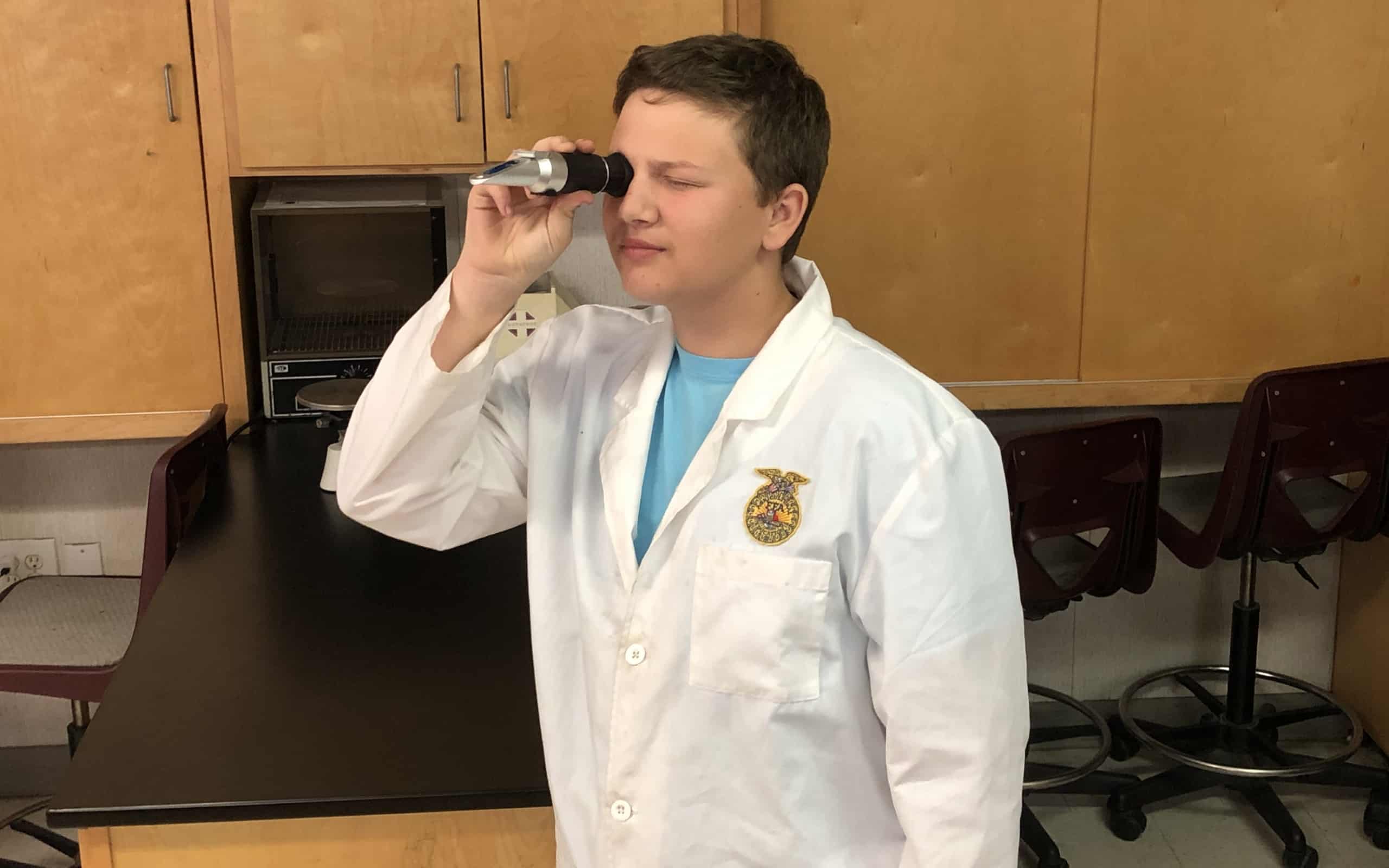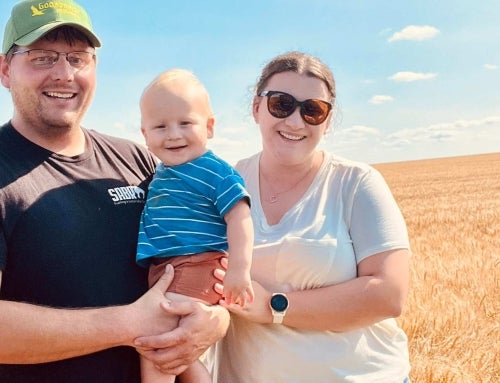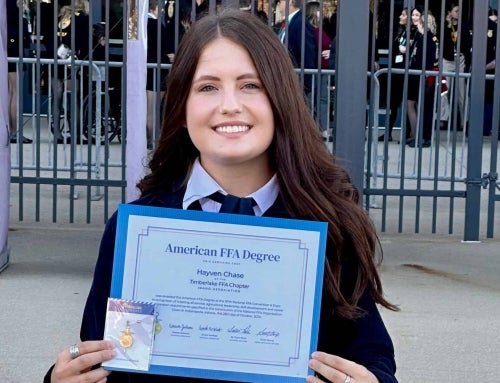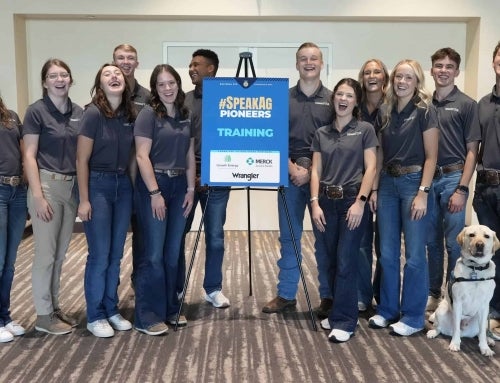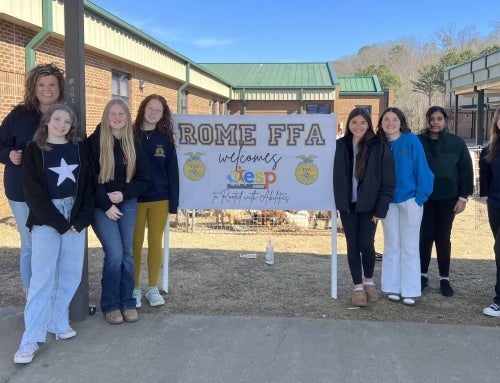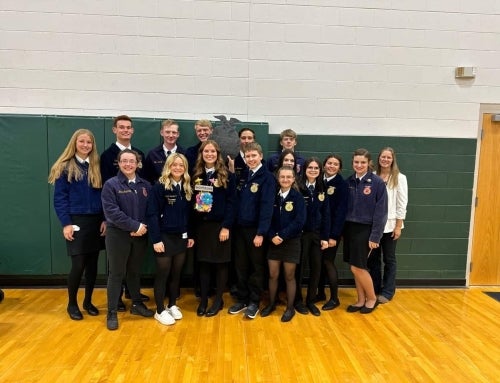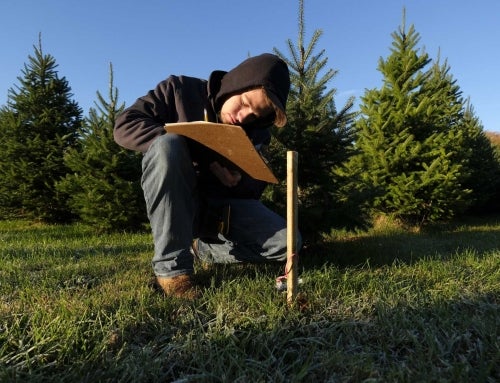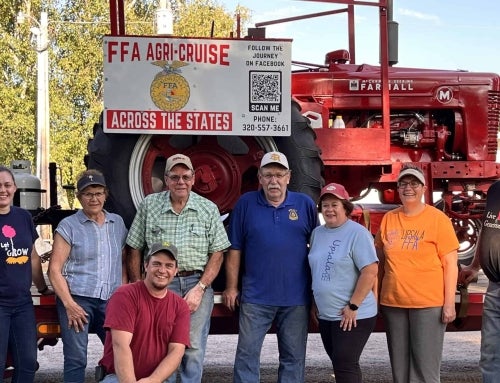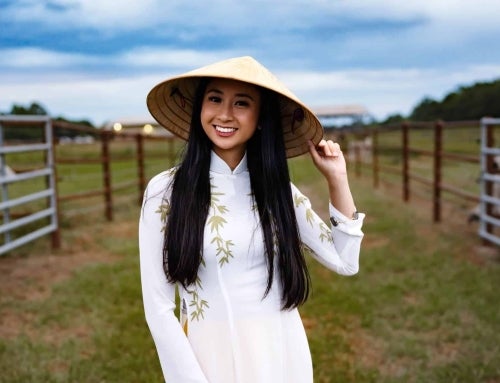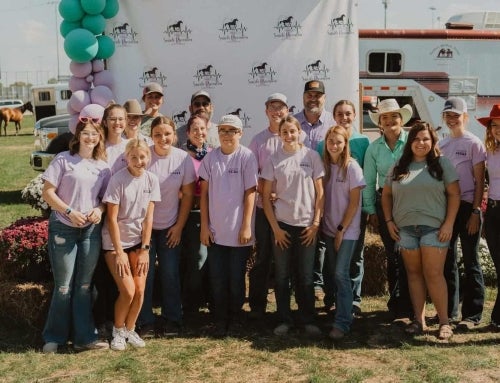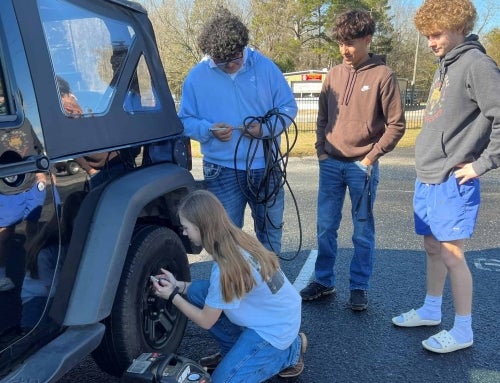Are you passionate about agriculture and science? The National FFA Agriscience Fair combines the best of both worlds and takes the concept of a traditional science fair to a whole new level. Middle and high school participants use scientific principles and cutting-edge technologies to solve complicated problems related to agriculture, food and natural resources.
After conducting their scientific research project, participants present their findings to a panel of judges with a display and a report. Winners at the state level go on to compete in six categories for National FFA Agriscience Fair awards, which are announced on stage during the National FFA Convention & Expo. Check out the contributions of these two 2020 national finalists.
What Makes Sweet Potatoes Sweeter?
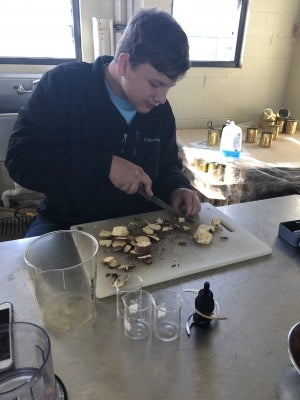 Zachary Daw, a senior in the Lowndes FFA Chapter in Georgia, is a veteran to the National FFA Agriscience Fair, having competed in it every year since the eighth grade. He placed first at the national level twice in the past five years and snagged a spot in the top three in 2020, this time in the food products and processing systems category.
Zachary Daw, a senior in the Lowndes FFA Chapter in Georgia, is a veteran to the National FFA Agriscience Fair, having competed in it every year since the eighth grade. He placed first at the national level twice in the past five years and snagged a spot in the top three in 2020, this time in the food products and processing systems category.
“For my current project, I studied the sugar content in sweet potatoes and Murasakis, a newer potato to south Georgia, both before and after a two-week curing process,” Daw says. “I learned that potatoes do increase their sugar content by 4 percent over a two-week period. It was definitely interesting, and it took a while to do the research because there wasn’t a lot of information out there about Murasakis.”
Daw’s findings are important for sweet potato growers because curing the potatoes makes them sweeter, and that makes them more appealing to buyers.
“I also learned that if farmers in Georgia focused on curing sweet potatoes, they could save over $1 million annually,” he says. “If they focus on selling one type of potato, they not only increase their profit margin, but they also don’t waste as much. Because our soil is so rich in Georgia, sweet potatoes are a big industry here.”
Daw also studied potatoes in his past National FFA Agriscience Fair projects.
“My first year competing, I learned about how millions of pounds of potatoes are thrown away into landfills each year because retailers look for attractive potatoes without a lot of holes or defects,” he says. “I found that the less attractive, wasted potatoes can be used as a by-product for bioplastics instead of going to the landfill, and farms in south Georgia could save $12,000 annually by sending their waste potatoes to a processing plant. It was fascinating, because who knew you could take a starchy vegetable and transfer it into kitchen plastics?”
Participating in the Agriscience Fair taught Daw that he can influence what products people buy, and it inspired him to pursue a career in agribusiness. He works part time at a Publix grocery store and plans to attend Abraham Baldwin Agricultural College after he graduates in 2021.
“Being involved in agriscience has given me a lot of opportunities,” he says. “I hope to move into the produce section of Publix to learn more about food safety and how we obtain produce from around the country.”
Pop-Up Ad Perceptions
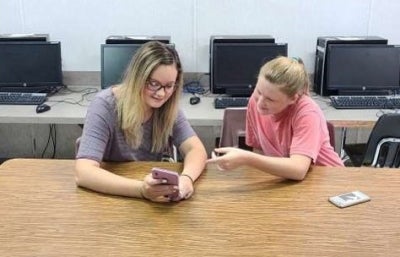
Sutton, left, tests her pop-up advertising hypothesis.
Sophomore Gracie Sutton also hails from the Lowndes FFA Chapter and is another top performer at the National FFA Agriscience Fair. In 2019, Sutton won first place nationally in the social systems category for her project that focused on chevon, or goat meat.
“I have a goat, and my ag teacher has a goat farm, and we both realized goat meat is not often found in U.S. grocery stores,” Sutton says. “For my first agriscience fair project, I decided to survey people about their perceptions of chevon. It isn’t sold in stores, but it’s actually very healthy. It’s healthier than chicken even though it’s considered a red meat, and it’s cheaper than beef, which most people have in their household.”
Sutton surveyed people at her school, staff members and parents of students to find out how much they knew about chevon. She used their responses in her project.
“I concluded that goat meat isn’t in stores in the U.S. because people see goats more as pets and not as food here. They think of raising and showing goats, not eating them,” she says. “But people from other cultures consume a lot of goat meat, and it has increased in the U.S. because of people moving here. I found that the economic impact of goat meat being sold in the U.S. could be great, and farmers could make a lot of money selling it.”
Sutton estimates the economic impact of goat meat sales in the United States could be more than $132 million.
For the 2020 agriscience fair, Sutton focused her project, also in the social systems category, on pop-up advertisements on the internet.
“I noticed advertisements will appear on Facebook about the exact thing you were just looking at,” she says. “I surveyed people to ask them if they had noticed it happening to them, and how they feel about it.”
Sutton discovered companies will purposefully send pop-up advertisements to consumers if they show an interest in their product by looking at it online.
“I found most people have noticed it happening to them, but surprisingly it did not bother them,” she says. “I personally am bothered by it.”
When Sutton found out she was a national finalist again this year, she was elated.
“I got a notification email on my phone during ag class, and I started screaming,” she says. “All my classmates gathered around, and we were all so excited. I’m close to the agriscience people at school because we help each other practice and prepare. It means a lot when your hard work pays off.”
Sutton hopes to pursue a career as an agriculture teacher after high school.
“I love the ag field, and I’ve always wanted to be a teacher,” she says, “so I figured being an ag teacher would be the best way to mix both.”

